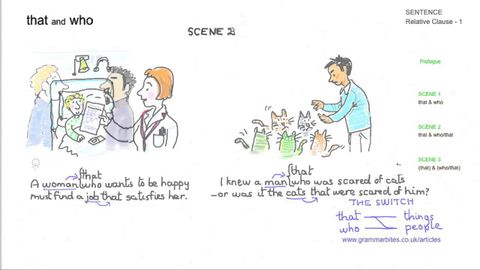
Subtitles & vocabulary
Learn English - Sentences: Relative Clauses (1 - 'that' & 'who')
00
钟楹海 posted on 2014/05/10Save
Video vocabulary
person
US /'pɜ:rsn/
・
UK /'pɜ:sn/
- Noun (Countable/Uncountable)
- Man, woman or child
- An individual, typically used to emphasize their distinct identity or role.
A1
More scene
US /sin/
・
UK /si:n/
- Noun
- Incident where someone behaves angrily, badly
- View that looks like a picture
A2TOEIC
More sentence
US /ˈsɛntəns/
・
UK /'sentəns/
- Transitive Verb
- (Of a judge) to decide the punishment of
- Noun
- Official punishment given by a court of law
- Set of words that make a whole statement
A1
More subject
US /ˈsʌbdʒekt/
・
UK /'sʌbdʒɪkt/
- Noun (Countable/Uncountable)
- The person, thing, or idea that is being discussed, described, or studied.
- The person or thing that does the action of a verb
- Transitive Verb
- To cause to suffer or experience something
A1TOEIC
More Use Energy
Unlock All Vocabulary
Unlock pronunciation, explanations, and filters
